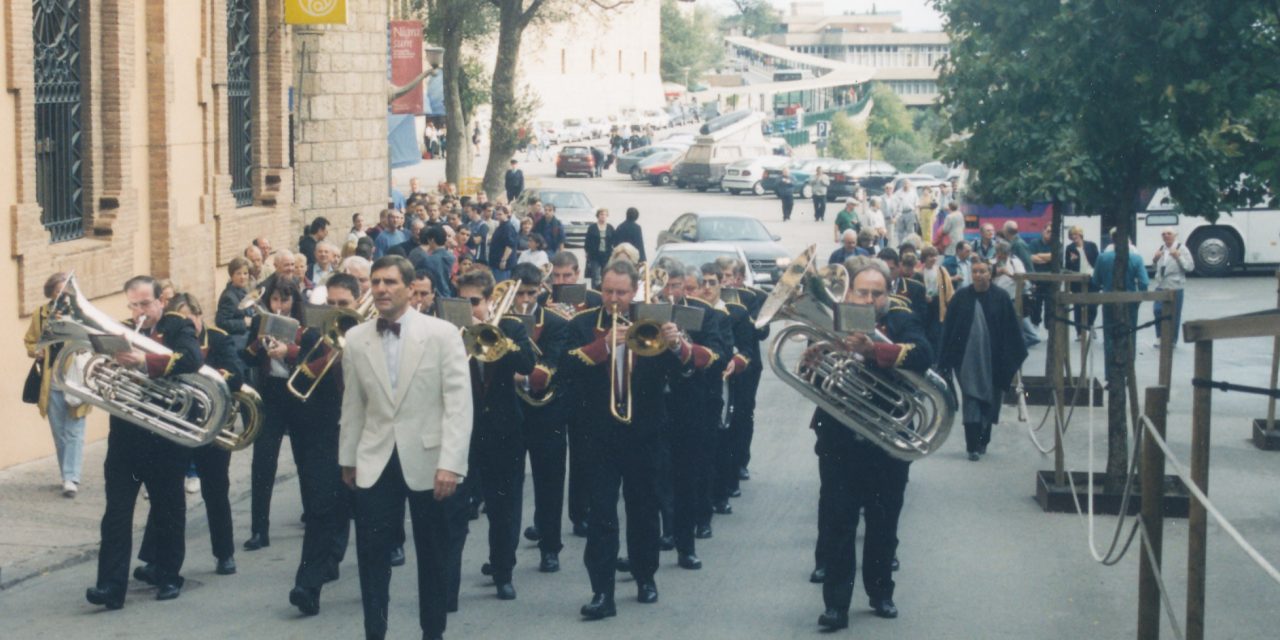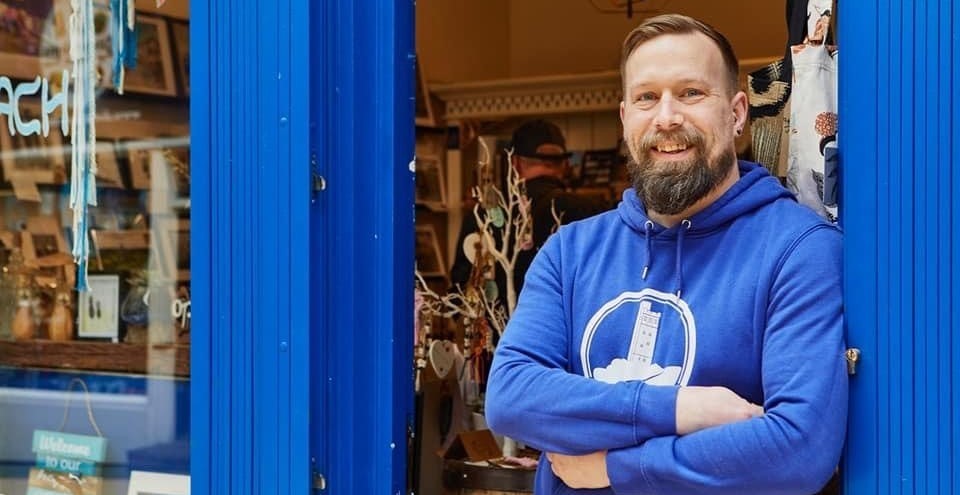By Christine Verguson, Huddersfield Local History Society
Lindley Band is the oldest surviving band in the Huddersfield district. It was in existence by 1832 when it accompanied Richard Oastler to the great meeting at York Castle where thousands gathered in support of the Ten Hour movement.
In 1844, after Oastler’s release from the Fleet Prison, it was Lindley Band that led the procession through Huddersfield town centre. And Lindley Band has from time to time been up there amongst the champion bands in the country.
It would seem then that the band has a story that needs telling and band secretary and long-time band member Paul Harrison has done just that.
Making the point that most localities took a great deal of pride in having their own band and that Lindley was no exception, he brings together the role the band has played in the life of the village together with its participation in the world of brass band music.
For the more recent history of the band, older and former members have been able to share their memories but the band’s own archive reaches back only to 1960.
The author explains that he has had to rely on other sources, particularly newspapers and other brass band publications. And, while there are no footnotes, archival and other references are clearly flagged in the text.

For most of their history, brass band musicians were working class. The main function of brass bands in the early years was to provide rousing music to accompany marches and parades.
The military provided opportunities for working class men to learn musical instruments and band members also learned their skills from their fellows. Paul Harrison says of these early bandsmen: “They were able to teach others by example. This informal means of training within the brass band movement has continued throughout the generations and is still practised today.”
While many newspaper references suggest that the Lindley Band frequently played in the centre of Huddersfield, the band’s involvement in village life is documented throughout.
In 1835 the Zion Chapel Sunday School agreed to hire the ‘Lindley Band of Music’ to accompany them on Whit Monday if they would do it for 10s ‘and their drinking.’
In 1854 the band was present at the first Lindley Horticultural, Agricultural and Floral Society Show at the Mechanics Hall; the author points out that this is the first reference both to them performing indoors and to being described as the Lindley Brass Band.
If we discount later sponsorship, it is surprising to learn that the band was being used for advertising purposes – in 1843, for example, it was hired to lead potential customers round Huddersfield town centre to an event which involved the consumption of beer and roast beef. When the beef did not appear, the police had to be summoned! Performances such as that given at the opening of Lindley Recreation Ground in 1894 were more typical.
These were working-class men and the author suggests that they had to both keep their support amongst their fellows in their workplaces and community – he refers to them as ‘working class heroes’ – as well as that of their middle-class patrons. J. W. Shaw of shoe shop fame acted as president in the 1860s while a list of notable past presidents includes Alderman Benjamin Broadbent and Lindley GP Dr Orr.
Both Broadbent and Orr frequently held fetes in their grounds so perhaps it is not surprising that they gave their support to their local band.
By the 1870s the Lindley band had begun to take part in local contests but they met with little success – they came eighth in their first competition at Cremorne Pleasure Garden in Marsh.
The need to appoint a professional conductor was realised and this paid off in September 1900 when they won first prize in the British Open held at Manchester’s Belle Vue. It was also a big day for Lindley – many of the band’s families and supporters would have followed the band over the Pennines and the the village came out in force to greet them on their return.
It should be said that the book is richly illustrated and the author says much detective work has gone into identifying those who feature in the photos.
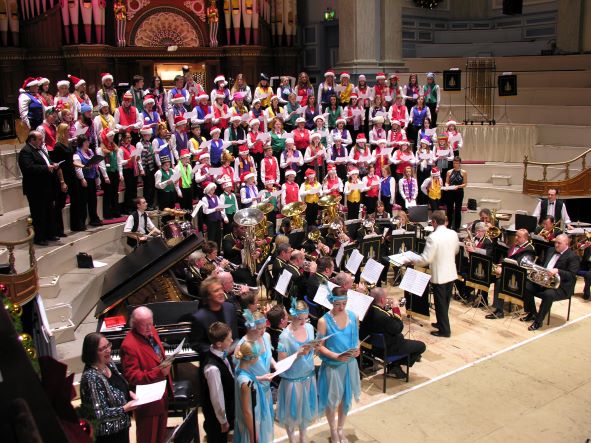
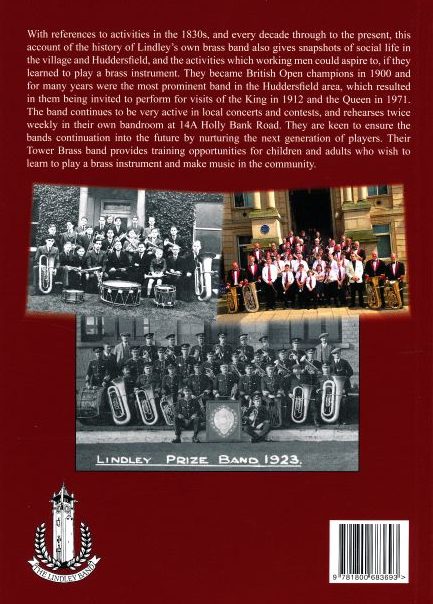
While these images also reflect the changes in band uniform over time, one particular image stands out. In July 1902 band members appear wearing top hats in one of the events leading up to the Coronation of Edward VII.
The band once again celebrated royalty when they turned out for the royal visit to Wellington Mills in 1912 and they were there for the opening of Scammonden Dam by the Queen in 1971.
In the course of the 20th century the band experienced mixed fortunes although it did return to entering contests soon after the First World War and there were times in the 1970s when Lancashire bands were said not to be entering contests because Lindley was coming.
There were broadcasts, recordings and foreign trips and in 2009 they opened a new band room. Although a female conductor led the band on one occasion in 1919, the first woman joined the band in 1949 and today women make up just over one third of the band.
The book does not end on an entirely optimistic note as brass band audiences are declining. Although members now tend to come from further away, in the past it was not unusual for more than one generation to join the band and this book may well be of interest to family historians.
Brass band enthusiasts will find other things to appreciate here but for this reviewer Paul Harrison has provided some fascinating glimpses of life in Lindley over the last 190 years.
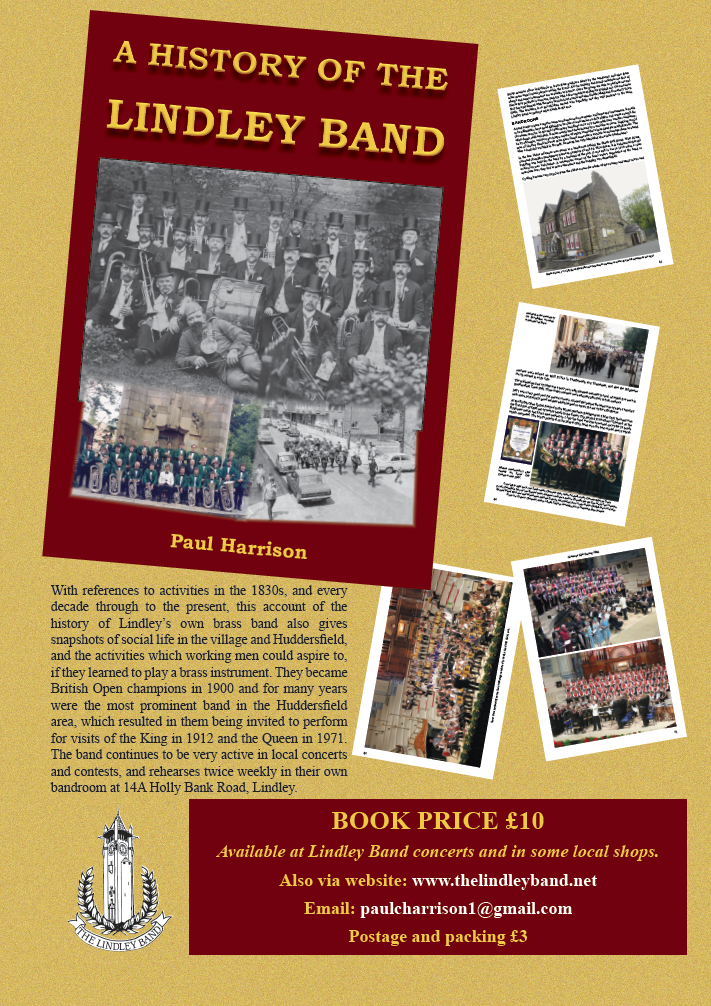
Paul Harrison, A History of the Lindley Band (Independent Publishing Network, 2021). 90 pages, £10 paperback.
Available from Lindley Band, www.thelindleyband.net or from the author by emailing paulcharrison1@gmail.com
This review was first published in Huddersfield Local History Society Journal 2022-2023 which aims to reflect recent research into the history of the Huddersfield district. To find out more about the new edition go to https://www.huddersfieldhistory.org.uk/


